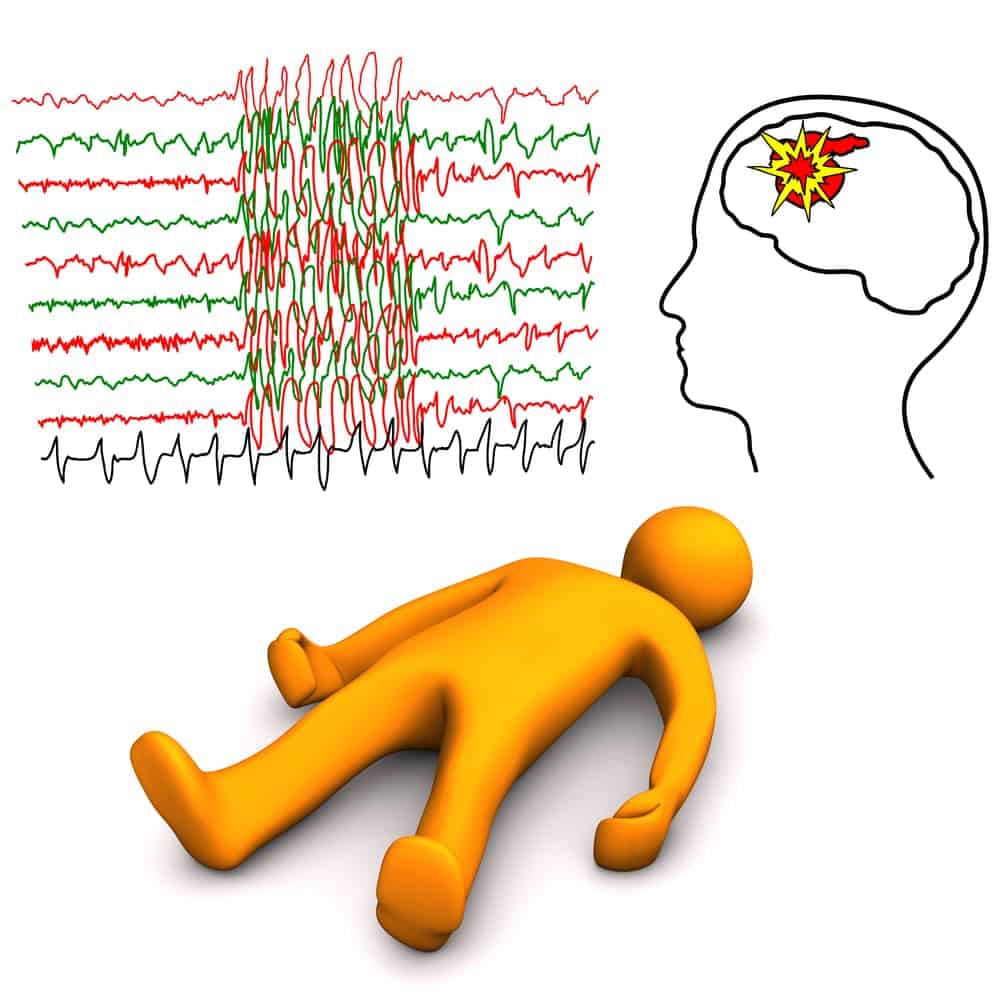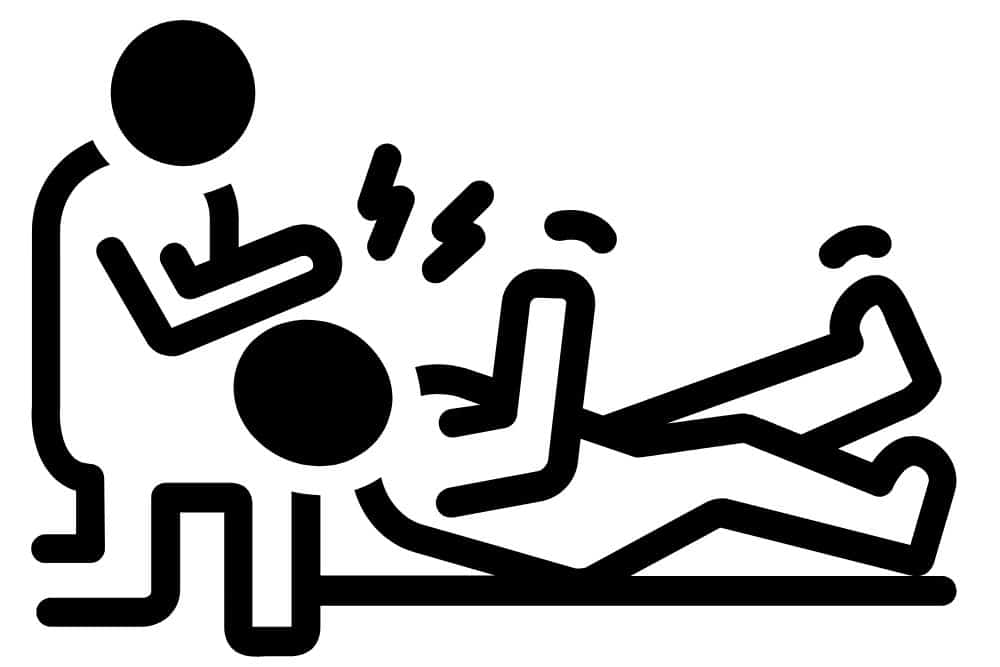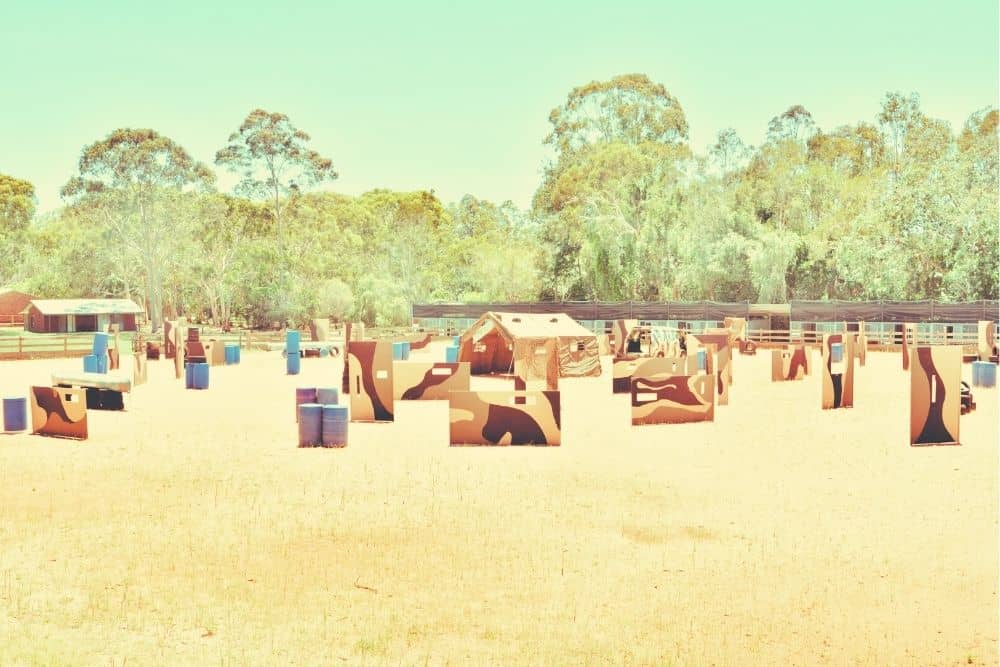Health and safety are priority number one when playing laser tag. While the adrenaline-pumping sport is friendly for most ages and skill levels, there are precautions players need to take before stepping into the laser tag area.
Players with epilepsy need to be particularly cautious when deciding whether to partake in a game of laser tag. While not every epileptic will be at risk for a seizure in a laser tag area, there are a few things to keep in mind if this is a concern for you or a loved one.

Contents
Photosensitive Epilepsy
Not all epileptics have to be cautious around laser tag. People with photosensitive epilepsy, especially if they are younger (under 20) need to exercise caution.
To start, about 3% of epileptics have photosensitive epilepsy. It’s more common in children and teenagers and becomes less frequent with age.
Triggers of photosensitive epilepsy include “exposure to flashing lights at certain intensities or to certain visual patterns can trigger seizures.” Individuals can also experience headaches, nausea, dizziness, and other symptoms from flashing lights, but this is not related to epilepsy.
Some people only have seizures in very specific light conditions. You may have a seizure once and never again, or you may have recurring seizures.
Photosensitive epilepsy can look different from case to case, so it’s important to know your body and talk to your doctor before making assumptions about your condition.
What light is used in laser tag?
There are a few kinds of lights that you will come across when playing laser tag.
Laser Gun Beams
 The thin red laser beams are what most people think about when they talk about laser tag lights. These LED lights typically don’t flash but some research suggests LED lights give off a barely noticeable flicker.
The thin red laser beams are what most people think about when they talk about laser tag lights. These LED lights typically don’t flash but some research suggests LED lights give off a barely noticeable flicker.
The invisible flicker can be picked up by the brain and cause seizures in epileptics. Although, when talking about LED lights, any digital screen, like the one on your computer, is also included.
So, do laser guns specifically cause seizures? There definitely is a risk of it.
Strobe Lights
Strobe lights and smoke machines are a big part of the laser tag ambiance for many establishments. Part of the appeal of paying for laser tag is getting to run around in a dark room with bright flashing lights.
Unfortunately, strobe lights are a big trigger for seizures. Many laser tag establishments will not even let epileptics play because the risk of them having a seizure on company property is too high.
Other establishments let players decide for themselves, as long as they acknowledge they are playing at their own risk. And some suggest individuals prone to seizures have a buddy while playing, or just let an employee know so that they can keep an eye on them.
If you know you are particularly sensitive to strobe lights, contact the laser tag venue beforehand and have a chat about your concerns and what you can do to keep yourself as safe as possible.
Light-Up Vests
A few laser tag establishments also have light-up vests that flash or change color when you get shot. For players without any health concerns, this is a fun addition to the game and adds an extra element of stimulation; however, these bright vests can trigger photosensitive epileptics.
Once again, we recommend calling into the laser tag establishment you’re going to in advance to get an idea of what kinds of lights they use in their venue.
Is laser tag harmful to eyes?
Epilepsy concerns aside, there are no harmful components to laser tag. The lasers used are LED lights, which are in almost every bright electronic device these days.
If you are concerned about the quality of the laser being used, check for the “Class 1 Laser Product” label. This will ensure that the toy is completely safe to use, even if accidentally pointed in someone’s eye.
Young children are especially prone to misusing laser tag guns, so we recommend that you double-check for this label before handing one over to a child under the age of five.
Recommended Class 1 Laser Product
This set of laser tag guns and vests are perfectly safe for your eyes. The company clearly states that the product does not exceed Class 1 Laser Product Limits, and if you want to get technical, they are also in conformance with Code of Federal Regulations 21 CFR 1040.10.
You don’t need any protective eye gear when using them, because “it is similar to the lights used in a garage opener or TV remote.” They are also third-party tested and quite affordable.
We appreciate a company that goes the extra mile to walk customers through why their product is safe and give them the specific guidelines they follow to ensure safety.
What to do if someone gets a seizure while playing laser tag?
 Firstly, an individual should never play laser tag with photosensitive epilepsy if they haven’t let anyone know about their condition. Ideally, everyone playing should know to keep an eye out.
Firstly, an individual should never play laser tag with photosensitive epilepsy if they haven’t let anyone know about their condition. Ideally, everyone playing should know to keep an eye out.
This doesn’t mean they’re asking to get special treatment during a game, it just means there will be people around that know what’s going on if they happen to become incapacitated.
A seizure can be scary, but staying calm is key and will ensure that everyone stays safe and well-monitored.
The CDC recommends these simple first-aid steps if someone gets a seizure:
- Ease them to the floor
- Turn them onto their side to help them breathe
- Make sure the area around them is clear
- Put support (like a folded jacket) under their head
- Remove glasses
- Loosen any tight clothing or jewelry around the neck
- Call 911 if the seizure lasts longer than 5 minutes
You should also call an ambulance if this is their first seizure (the flashing lights might have triggered it), if the person is in pain, if they have more than one seizure, or if they have trouble breathing or walking afterward.
If you’re photosensitive or are planning on playing laser tag with someone who is, you can read more about seizure first aid on the CDC website.
How to Play Safely
 Outdoor, brightly lit laser tag games are ideal for those concerned about photosensitivity. The dark laser tag venues have a lot of artificial flashing lights that could be triggering, but playing outside eliminates all of that.
Outdoor, brightly lit laser tag games are ideal for those concerned about photosensitivity. The dark laser tag venues have a lot of artificial flashing lights that could be triggering, but playing outside eliminates all of that.
Festivals sometimes have outdoor laser tag, which sometimes includes a maze or two.
If you can’t find an outdoor venue around you, play at home! Setting up a laser tag game with friends is fun and easy. And we’re sure they won’t mind moving the party if that means that you don’t have to worry about any health risks.
There are plenty of ways to make a DIY laser tag party just as fun as one in a professional establishment.
Tactical Laser Tag
Some people also enjoy playing laser tag in the forest and making it a more tactical game. Not only does this make laser tag more challenging, but it’s also a great way to strategize and try out different positions and points of attack.
Some people prefer forest laser tag because it’s more complex and makes the sport a lot more interesting. You can even dress up in camouflage and put on camo face paint!
Tactical games also last a lot longer, since the playing field is significantly bigger. However, because this way of playing is a bit more complex, it’s probably not suitable for super young children.
Paintball
 Paintball is similar to laser tag in many ways, and involves absolutely no lights — so it’s perfect! If you live in an area where they have a laser tag establishment, chances are you have a paintball place not too far away!
Paintball is similar to laser tag in many ways, and involves absolutely no lights — so it’s perfect! If you live in an area where they have a laser tag establishment, chances are you have a paintball place not too far away!
You could even say that paintball is even more satisfying than laser tag because you get to shoot little pellets at your opponents. It’s the perfect opportunity to work on your aim and get a little payback!
The average minimum age for paintball is ten years old, so keep that in mind before booking! Other than that, have fun playing strobe and laser for free!
Stay Safe!
Individuals with photosensitive epilepsy should talk to their doctor and the establishment before deciding whether to play laser tag. For many, laser tag is ‘just a game’, but seizures can be scary and dangerous, and they are not to be taken lightly.
If you have any doubts at all about playing, sit laser tag out. We promise there will be plenty of other fun activities you can partake in later on.
And if you’re absolutely desperate to play some laser tag, bring a buddy with you so you have someone to follow the CDC recommended guidelines for seizure first aid. Just make sure they are well informed beforehand.
Stay safe and have fun!
